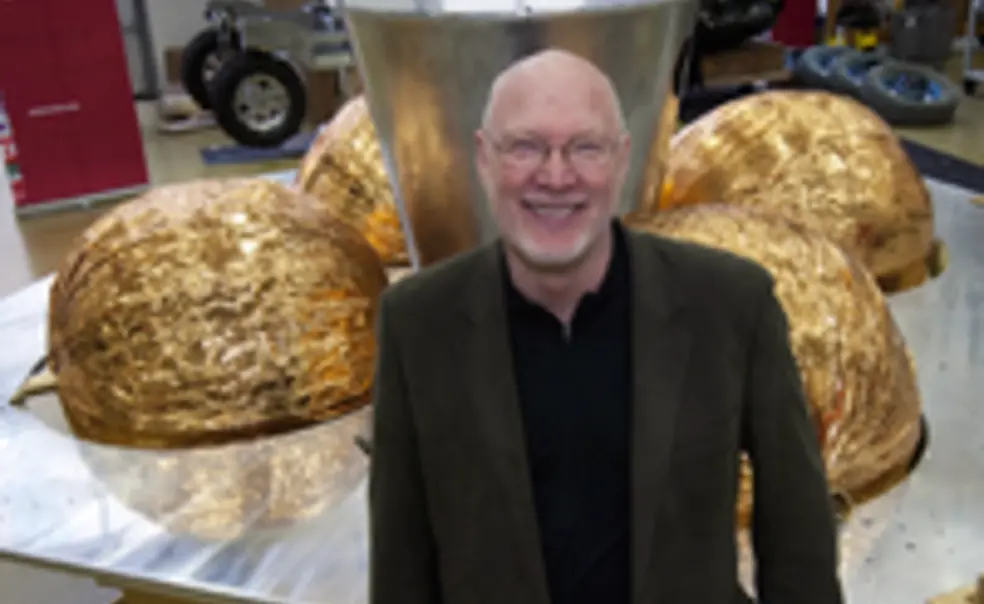Tiger of the Week: William "Red" Whittaker '73
Red Whittaker ’73 in front of his lunar lander (Tim Caulen/Courtesy Carnegie Mellon University)
Robot designer William “Red” Whittaker ’73 likes challenges. One of his latest goals: sending one of his robots to the moon. With a team of students, the Carnegie Mellon robotics professor is competing for the Google Lunar X Prize, which will award $20 million to the first privately funded team to create a robot that can land safely on the moon’s surface, travel 500 meters, and transmit data and images back to Earth.
Whittaker has developed dozens of robots that have cleaned up nuclear damage at the Three Mile Island nuclear power plant, harvested alfalfa, mapped mines, traveled into active volcanoes, and sought meteorites in Antarctica. His ground vehicles have driven thousands of autonomous miles. In August, he will receive the Feigenbaum Prize for his contributions to machine intelligence.
At first, he planned to design just the lunar robot, leaving the design and building of the landing craft to aerospace experts, but he told The Wall Street Journal that he grew impatient and decided two years ago to try his hand at spacecraft. “The greatest challenge in a lunar surface mission,” he said, is “landing precisely and safely. … The landing is all propulsive, and you get one shot. “
Whittaker, who served two years in the Marines before earning a B.S. in civil engineering at Princeton and a Ph.D. at Carnegie Mellon, told the Journal that he credits his parents for encouraging his interest in exploration and his boldness. A science teacher, his mother also flew planes, and his father was a World War II Air Force bombardier.
He expects the robot and spacecraft to reach the moon in April 2014. “The human spirit,” he told the Journal, “is built for exploration. And there’s much more to be done.”













No responses yet